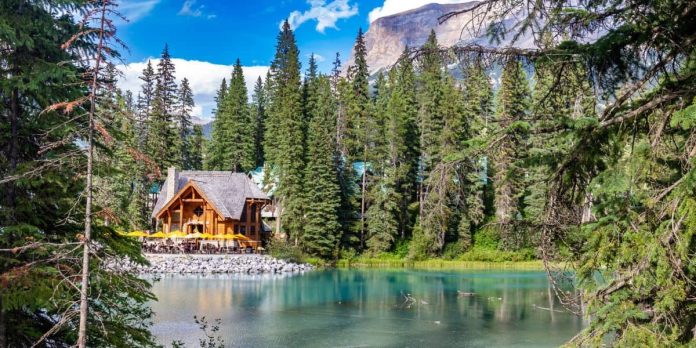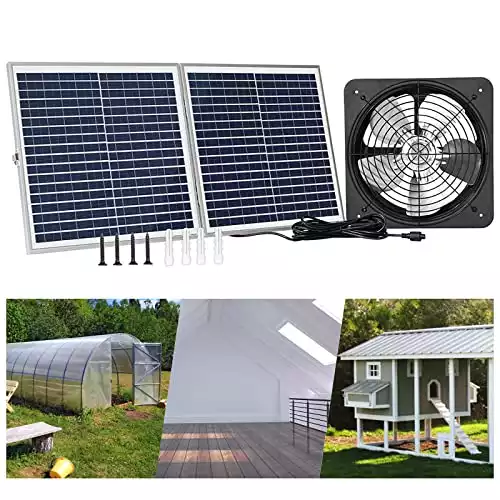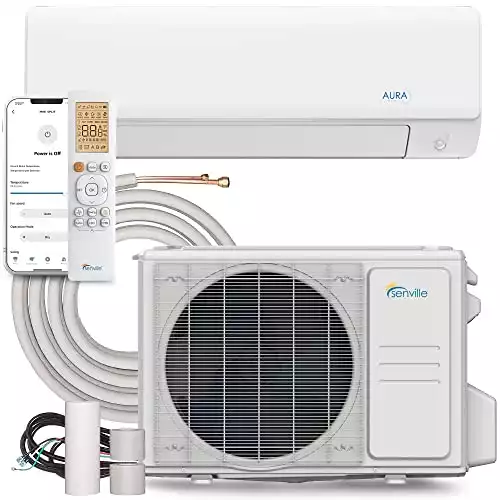Central air conditioning is great when it’s hot and you’re suffering. Unfortunately, if you live entirely off-grid in a self-sufficient home, you might not have the luxury of whole-house air conditioning. But you don’t have to bake, either.
There are many ways to maintain your cool with off-grid air conditioning, from creative DIY “swamp coolers” to commercial products designed to operate on solar-supplied DC power. Here are some great ways to cool down in the summer heat.
Can an Off-Grid System Support Whole-House Air Conditioning?
The short answer is no. Off-grid energy sources cannot produce a consistent-enough energy supply to power a central air conditioning system. But don’t resign yourself to a future of sweltering summers yet. There are a number of alternative solutions.
Understanding Solar Panels and How Solar Power Systems Work
You don’t need an engineering degree to understand how solar panels work. The sun shines and the panels collect the rays. Direct current (DC) energy is conducted through an inverter to become alternating current (AC) electricity.
The solar industry is growing by leaps and bounds, and panel efficiency is improving almost daily. We recommend determining your expected usage when installing a solar power system for off-grid use. Find out how much power each component will draw and design the system using the sum of all the usage requirements for your appliances.
Solar arrays can run standard household fans and items such as DC air conditioning units that are made to create less power draw. You can easily stay cool even without central air conditioning by incorporating some ingenuity.
Thinking Outside the Box: Non-Standard Air Conditioning Solutions
Thinking beyond central air conditioning is key to staying cool. Rather than trying to cool the entire building, concentrate on each room. Modifying your cooling needs to individualized units allows you to keep cool no matter how hot it is outside.
An off-grid system can support individual room-sized air conditioning units with DC power and a lower power draw. However, running an entire central-cooling system creates too much of a draw on power reserves to remain effective on low-solar production days.
How you solve your cooling problems is typically a matter of how much money you have to invest. A simple swamp cooler can cost around $20 to $30. You can get a little fancier with $50. You can also choose a DC window unit or other more expensive options.
Here are some of the various ways to keep your home cool without central air.
1. Passive Cooling Systems
Passive cooling is more than one device. It’s more of a new approach to cooling.
One passive cooling device designed at the Massachusetts Institute of Technology (MIT News) can relieve the load on an existing cooling system or serve as a standalone small-room system. It attaches to the roof of a building and uses evaporation to enhance the cooling ability of other equipment within a system. This reduces wear and tear on equipment because it isn’t required to work as hard.
The system MIT developed uses a simple layering system with one layer of aerogel, one layer of hydrogel, and a bottom reflective layer.
The aerogel layer contains air pockets that allow airflow during evaporation. The hydrogel layer holds the liquid that evaporates to create the cooling effect. The bottom layer reflects residual filtered light back through the unit to increase the evaporation rate.
While not as effective as electric cooling systems for standalone use, passive cooling could be very useful in increasing the cooling capacity of other components within the system.
2. Solar Attic Fan
Removing excess heat is one of the most effective ways to keep an area cool. Attic fans, which run exceptionally well under solar power, are a great option to stay cool.
Will it keep you as cold as central air conditioning? No, but if you prefer comfort to roasting in a hot box, an attic fan can be the solution you need to bring comfort to your cabin.
The name “attic” fan can be misleading. For our purposes, we are referring to a fan system that removes hot air from the interior of a structure and vents it outside.
They are typically mounted in an attic to remove the heat that can gather in that smaller, confined space. By venting the hot air out, the entire house will remain cooler.
You probably don’t have an attic if you live in a cabin in the woods. However, you can use a ceiling-mounted fan vented to the outside and enjoy the same cooling effect. Heat will rise. As it rises and accumulates, it will gradually overtake any enclosed space. Therefore, venting excess warm air will create a cooling effect by pulling cooler air up to replace the vented heat.
Here are some of the options on Amazon:
3. DIY Portable Solar-Powered Air Conditioner (aka Swamp Cooler)
Most of us have heard the term “swamp cooler” tossed around. This simple do-it-yourself (DIY) contraption can provide considerable cooling power for smaller spaces.
You’ll need a small styrofoam cooler, a fan, and piping. You can use a small computer fan, a battery-operated camp fan, or something similar.
Begin by cutting a hole in the styrofoam lid for the fan. You want to position the fan to draw air from the room into the cooler.
Next, you’ll need to create a vent. Many people use a two-inch PVC elbow assembly, but I’ve also seen them fashioned out of cardboard and duct tape.
The vent should be attached to the lid on the opposite side of your fan, with the end of the tube pointing away from the cooler. This video shows the process.
Fill the cooler’s base with ice, turn on the fan, and poof—you’ve just made a swamp cooler!
You can use any cooler or even a five-gallon bucket, but styrofoam is easy to work with. You’ll need special tools to make the vents in a plastic cooler or bucket, but the basic construction is the same.
This video demonstrates using a bucket with a lid to make a DIY swamp cooler.
4. Copper Coil Fan
For this DIY cooling method, you’ll need a length of quarter-inch copper tubing, a fan, clear plastic tubing, a bucket, hose clamps, a small sump pump, and some tie wraps. The assembly is more complicated than the swamp cooler but easy enough to DIY.
Begin by wrapping the copper tubing in a graduating coil around the face of the fan. Secure the coil to the wire safety frame on the fan using cable ties (tie wraps or zip ties). Once you have the copper tubing coiled around the face of the fan, attach the plastic tubing and hose clamps.
Route the tubing to the sump pump. You can use a fish tank circulation pump, which is easily accessible and inexpensive. Place the pump into the bucket. Add water and ice, then plug in your fan and the pump. The total draw for both is approximately 45 watts, which will run nicely off most solar setups.
Here’s a video that shows you how to make a copper coil fan.
5. Use of Shade
Where you position your home on your property, in relation to any natural shade and the orientation of the sun, can have a huge effect on the temperature inside your home. If you’re building a cabin or home on a vacant property, consider this as you make your plans.
By being aware of the sun’s trajectory and the position of existing large canopy trees, you can ensure that your home has more natural shading. This can easily manage internal heat accumulation, keeping your home cooler.
6. DC Air Conditioning Units
Typical air conditioning units use AC power, but a DC-powered unit is more efficient when off the grid. When installing off-grid air conditioning, knowing your equipment requirements is essential.
Be aware of the output rating of your solar array and the draw for each component you intend to add. Don’t assume that your panels will always supply the peak power rating listed on the data sheet (they won’t).
If you add three items that draw 45 watts each to a system producing 100 watts of output power, they won’t run.
Mini-split systems and DC air conditioning units are available. These typically have a lower power draw and are designed to work with solar energy. You can easily install most of these yourself and connect them directly to your solar array or through a battery storage system.
Mini-split units employ a combination DC air conditioning system with a heat pump to efficiently use your solar power.
These units are becoming increasingly popular for off-grid living with larger solar panel arrays and greater power output. The units provide adequate cooling power without placing a huge drain on the solar power supply.
Here are some options on Amazon:










